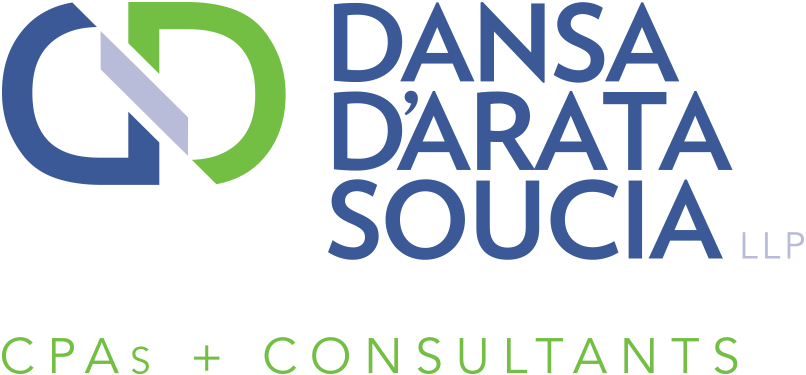Casualty losses can provide a 2017 deduction, but rules tighten for 2018
 If you suffered damage to your home or personal property last year, you may be able to deduct these “casualty” losses on your 2017 federal income tax return. For 2018 through 2025, however, the Tax Cuts and Jobs Act suspends this deduction except for losses due to an event officially declared a disaster by the President.
If you suffered damage to your home or personal property last year, you may be able to deduct these “casualty” losses on your 2017 federal income tax return. For 2018 through 2025, however, the Tax Cuts and Jobs Act suspends this deduction except for losses due to an event officially declared a disaster by the President.
What is a casualty? It’s a sudden, unexpected or unusual event, such as a natural disaster (hurricane, tornado, flood, earthquake, etc.), fire, accident, theft or vandalism. A casualty loss doesn’t include losses from normal wear and tear or progressive deterioration from age or termite damage.
Here are some things you should know about deducting casualty losses on your 2017 return:
When to deduct. Generally, you must deduct a casualty loss on your return for the year it occurred. However, if you have a loss from a federally declared disaster area, you may have the option to deduct the loss on an amended return for the immediately preceding tax year.
Amount of loss. Your loss is generally the lesser of 1) your adjusted basis in the property before the casualty (typically, the amount you paid for it), or 2) the decrease in fair market value of the property as a result of the casualty. This amount must be reduced by any insurance or other reimbursement you received or expect to receive. (If the property was insured, you must have filed a timely claim for reimbursement of your loss.)
$100 rule. After you’ve figured your casualty loss on personal-use property, you must reduce that loss by $100. This reduction applies to each casualty loss event during the year. It doesn’t matter how many pieces of property are involved in an event.
10% rule. You must reduce the total of all your casualty losses on personal-use property for the year by 10% of your adjusted gross income (AGI). In other words, you can deduct these losses only to the extent they exceed 10% of your AGI.
Note that special relief has been provided to certain victims of Hurricanes Harvey, Irma and Maria and California wildfires that affects some of these rules. For details on this relief or other questions about casualty losses, please contact us.
© 2018


 Whether you’re claiming charitable deductions on your 2017 return or planning your donations for 2018, be sure you know how much you’re allowed to deduct. Your deduction depends on more than just the actual amount you donate.
Whether you’re claiming charitable deductions on your 2017 return or planning your donations for 2018, be sure you know how much you’re allowed to deduct. Your deduction depends on more than just the actual amount you donate. Recently a number of states have changed their Business Tax Laws in an effort to capture business economic activity conducted in their respective states and subject such activity to income tax. “Nexus” is referred to as the standard which, when satisfied, will subject a business to file and pay income taxes in a state. Prior to the ever evolving world of technology in which we currently exist, nexus was commonly satisfied for almost all states when there was some form of “physical presence” in the state (i.e. an out of state business that had offices, employees, agents, or property in the state). As a result of e-commerce and other technological advances, the “physical presence” test traditionally applied as the standard for capturing out of state business activities has become outdated and has resulted in many states changing their approach to an “economic presence” standard.
Recently a number of states have changed their Business Tax Laws in an effort to capture business economic activity conducted in their respective states and subject such activity to income tax. “Nexus” is referred to as the standard which, when satisfied, will subject a business to file and pay income taxes in a state. Prior to the ever evolving world of technology in which we currently exist, nexus was commonly satisfied for almost all states when there was some form of “physical presence” in the state (i.e. an out of state business that had offices, employees, agents, or property in the state). As a result of e-commerce and other technological advances, the “physical presence” test traditionally applied as the standard for capturing out of state business activities has become outdated and has resulted in many states changing their approach to an “economic presence” standard. Employees tend not to fully appreciate or use their retirement benefits unless their employer communicates with them about the plan clearly and regularly. But workers may miss or ignore your messaging if it all looks and “sounds” the same. That’s why you might want to consider getting more creative. Consider these ideas:
Employees tend not to fully appreciate or use their retirement benefits unless their employer communicates with them about the plan clearly and regularly. But workers may miss or ignore your messaging if it all looks and “sounds” the same. That’s why you might want to consider getting more creative. Consider these ideas: If you purchased qualifying property by December 31, 2017, you may be able to take advantage of Section 179 expensing on your 2017 tax return. You’ll also want to keep this tax break in mind in your property purchase planning, because the Tax Cuts and Jobs Act (TCJA), signed into law this past December, significantly enhances it beginning in 2018.
If you purchased qualifying property by December 31, 2017, you may be able to take advantage of Section 179 expensing on your 2017 tax return. You’ll also want to keep this tax break in mind in your property purchase planning, because the Tax Cuts and Jobs Act (TCJA), signed into law this past December, significantly enhances it beginning in 2018. Social media can be an inexpensive, but effective, way to market a company’s products or services. Like most businesses today, you’ve probably at least dipped your toe into its waters. Or perhaps you have a full-blown, ongoing social media strategy involving multiple sites and a variety of content.
Social media can be an inexpensive, but effective, way to market a company’s products or services. Like most businesses today, you’ve probably at least dipped your toe into its waters. Or perhaps you have a full-blown, ongoing social media strategy involving multiple sites and a variety of content. If you moved for work-related reasons in 2017, you might be able to deduct some of the costs on your 2017 return — even if you don’t itemize deductions. (Or, if your employer reimbursed you for moving expenses, that reimbursement might be excludable from your income.) The bad news is that, if you move in 2018, the costs likely won’t be deductible, and any employer reimbursements will probably be included in your taxable income.
If you moved for work-related reasons in 2017, you might be able to deduct some of the costs on your 2017 return — even if you don’t itemize deductions. (Or, if your employer reimbursed you for moving expenses, that reimbursement might be excludable from your income.) The bad news is that, if you move in 2018, the costs likely won’t be deductible, and any employer reimbursements will probably be included in your taxable income. You may keep a wary eye on your competitors, but sometimes it helps to look just a little bit deeper. Even if you’re a big fish in your pond, someone a little bigger may be swimming up just beneath you. Being successful means not just being aware of these competitors, but also knowing their approaches and results.
You may keep a wary eye on your competitors, but sometimes it helps to look just a little bit deeper. Even if you’re a big fish in your pond, someone a little bigger may be swimming up just beneath you. Being successful means not just being aware of these competitors, but also knowing their approaches and results. Whether you had a child in college (or graduate school) last year or were a student yourself, you may be eligible for some valuable tax breaks on your 2017 return. One such break that had expired December 31, 2016, was just extended under the recently passed Bipartisan Budget Act of 2018: the tuition and fees deduction.
Whether you had a child in college (or graduate school) last year or were a student yourself, you may be eligible for some valuable tax breaks on your 2017 return. One such break that had expired December 31, 2016, was just extended under the recently passed Bipartisan Budget Act of 2018: the tuition and fees deduction.  Many businesses train employees how to do their jobs and only their jobs. But amazing things can happen when you also teach staff members to actively involve themselves in a profitability process — that is, an ongoing, idea-generating system aimed at adding value to your company’s bottom line.
Many businesses train employees how to do their jobs and only their jobs. But amazing things can happen when you also teach staff members to actively involve themselves in a profitability process — that is, an ongoing, idea-generating system aimed at adding value to your company’s bottom line.